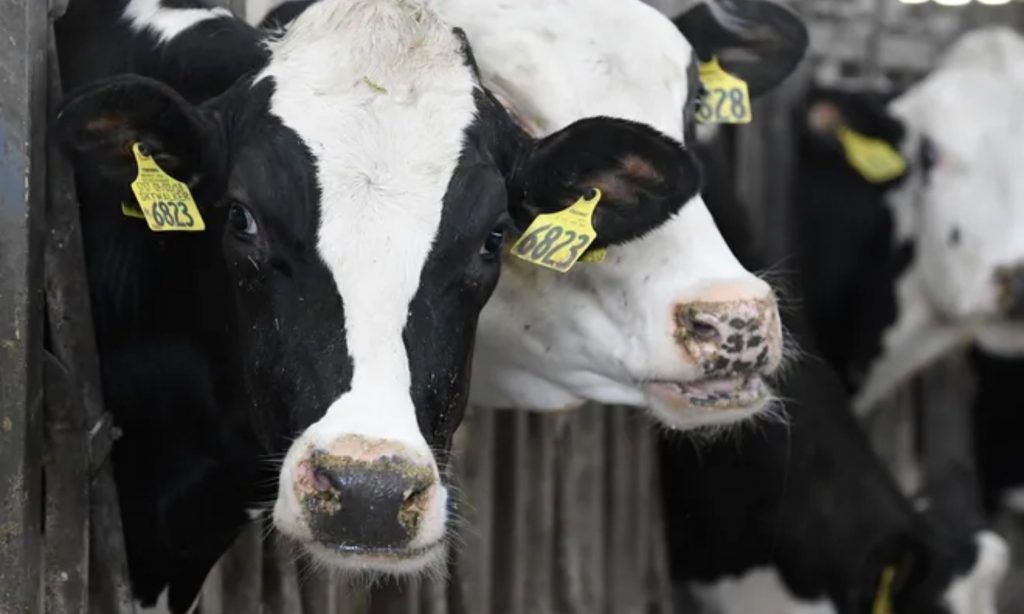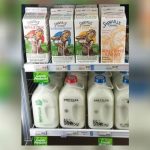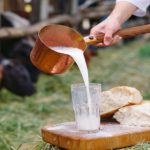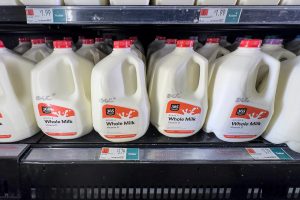
Barrel cheddar cheese prices have increased steadily since early March going form $1.55 per pound to now $1.9525. Forty-pound cheddar blocks moved up and down in March declining to $1.78 per pound early March to now $1.99.
Where milk prices are headed for the reminder of the year is a big question. The answer seems to change weekly as dairy product prices change as do forecasts of milk production, domestic sales, and dairy exports.
What’s impacting milk production?
Milk production increased just 0.1% in 2022. USDA is forecasting milk production to increase 0.9% in 2023. This higher increase will put some downward pressure on milk prices. It is not likely milk production will increase more than this. With continued high feed costs and higher cost of other inputs along with lower milk prices dairy producers will face tighter margins in 2023 than 2022.
Also higher slaughter cow prices will likely increase the culling of cows from the herd and this along with fewer dairy replacements could actually reduce the average number of cows in 2023. USDA forecasts the average number of cows in 2023 will decline by 10,000 from 2022. High feed prices are likely to dampen the increase in milk per cow.
The increase in milk production has been 1% higher than a year ago since August. The February increase was just 0.8%. Milik cows were 37,000 above a year ago, an increase of 0.4% and milk per cow was just 0.4% higher. Twelve of the 24 reporting states had more milk cows than a year earlier and 12 had more milk production than a year ago.
States with the relatively highest increase in milk production were Georgia 6.8%, South Dakota 6.2%, Iowa 6.0%, and Texas 5.0%. Increases in milk production in other key states was Idaho 3.4%, Michigan 3.1%, New York 2.9%, and Wisconsin 0.3%. Production was 0.9% lower in California. The biggest relative decline in milk production was Florida 11.4% with 11,000 fewer cows, Virginia 5.2% with 6,000 fewer cows and New Mexico 4.2% with 12,000 fewer cows.
Domestic and export sales
Domestic sales for 2022 fell slightly below 2021. USDA is forecasting domestic sales for 2023 to increase and being higher than 2021. Operators of restaurants are optimistic for sales in 2023. If this materializes it would strengthen cheese sales. Retail prices of milk and dairy products should also decline some, which would help sales.
Dairy exports reached a new record in 2022. USDA is forecasting a decline in exports for 2023. This is based on the fact that U.S. will face more competition for markets as milk production is improving in Western Europe and possibly New Zealand, the two leading dairy exporters, and slower growth in global demand.
However, dairy exports in January on a milk-solids equivalent basis was 16% higher than last year. Compared to January of last year exports were up 15% for nonfat dry milk/skim milk powder, 12% for whey products and 16% for cheese but down 13% for butterfat. U.S. prices of cheese and nonfat dry milk/skim milk powder are expected to remain competitive on the world market.
Dairy futures not the best price forecaster
Dairy futures are not the best price forecaster. In early March Class III futures were in the $17’s and low $18’s first half of the year. While Class III was $17.78 in February Class III futures through June have increased to the high $18’s. Class III futures were in the $18’s to low $19’s for the second half of the year and have increased to the high $19’s.
These current futures are much more optimistic than USDA’s latest forecast. USDA Class III forecast is $18.20 first quarter, $17.25 second quarter, $17.35 third quarter, $17.45 for fourth quarter and averaging $17.55 for the year compared to $21.94 for 2022.
While neither dairy futures or USDA forecast may end up near what Class III prices will be, both are possible. Higher Class III prices the second half of the year versus the first half seems likely as milk production is seasonally lower in the summer and early fall while building of butter and cheese inventories begin in preparation for seasonally high butter and cheese sales Thanksgiving through Christmas.Based on projected less than a one percent increase in milk production, a modest increase in domestic sales and dairy exports down slightly USDA’s price forecast seems too low. Dairy futures may also be too high unless milk production ends up lower than projected and domestic sales and or dairy exports end up higher than projected.























